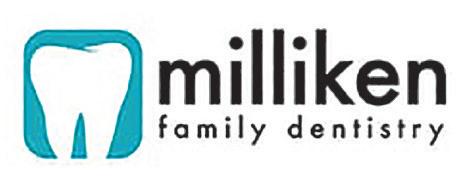












































(Family Features) Cooler weather inevitably means cough, cold and flu season isn’t far behind. Now is the time to take precautions and set yourself up with healthy habits.
As much as we try, avoiding viruses, bacteria and germs to prevent getting sick can be a challenge. However, being prepared with the right remedies, listening to your body and its symptoms and remaining diligent with a healthy routine is just as important as treating symptoms head on.”
To help navigate this cough, cold and flu season, consider these tips.
Prepare and Prevent
You won’t find a foolproof way to keep germs away, but you can lessen your chances of getting sick and make sure you’re equipped to weather an illness.
* Practice healthy habits. Keeping your body in prime condition can help ensure you’re in the best condition possible to fight back when germs attack..
* Get a flu shot. The flu shot gives your body a head start in fighting back against flu bugs. If you’re exposed to the flu after receiving the shot, your body can immediately go on the offensive against those germs. You may not stay completely symptom-free, but you’re more likely to experience a mild case and be back on your feet quicker.
* Restock the medicine cabinet. The start of cough, cold and flu season is an ideal time to dig through your medicine cabinet. Start by discarding any medications that are out of date and make a list of anything you need to replenish. Be sure to include pain relievers, fever reducers, decongestants, antihistamines and cough syrups to fight symptoms. It’s also a good time to restock items like tissues, cough drops, hand sanitizer and anti-bacterial soap.
Treat Symptoms

Although the flu can hit fast, it’s often hard to tell at first whether your symptoms are due to a simple cough, cold or a case of the flu. Either way, managing symptoms like a cough can bring relief and help you keep comfort-
able and get plenty of rest.
* Give your body time to heal. Sleep plays an important role in your overall health, especially when you’re under the weather. On average, you need 7-9 hours each night to give your body enough time to fully recharge. When you’re sick, you likely need even more, and it’s a good idea to dial back your activity level, too. Pushing your physical limits often only delays your recovery time.
* Take medications as directed. Nagging symptoms can often keep you from getting the sleep you need. One way to give your body the break it needs is to effectively manage symptoms. A hacking cough is a common symptom that can be painful and disrupt your sleep. Consider an option like Mucinex DM 12-Hour, a cough suppresent which relieves chest congestion and thins and loosens mucus, giving you an extended reprieve. It’s clinically proven to last up to 12 hours, provides relief for chest congestion and makes coughs more productive.
Prevent Spread
Getting sick may be beyond your complete control, but you can take steps to protect others from germs when you’re feeling ill.
* Keep germs to yourself. Washing your hands often, covering your nose and mouth with a tissue when you cough or sneeze and sneezing into your elbow if you don’t have a tissue are simple ways you can limit the spread of germs, especially within your home or workspace. Fs.
* Skip socializing. If you’re feeling under the weather, stay home. Even a mild cold can easily spread, and an illness that affects you mildly could cause significant distress for someone else. Avoid unnecessary errands and take advantage of services like curbside pickup . Cold vs. Flu
There’s a lot of overlap between cold and flu symptoms, so it can be tricky to figure out whether the bug you’re fighting is a cold or influenza and how to tackle it. While both the common cold and the flu are respiratory illnesses, they are not caused by the same viruses. Although colds are inconvenient, they are far less likely to develop into anything more serious, as the flu can. Generally, colds are milder than the flu, and more likely to cause runny or stuffy noses (while the flu can cause stuffy or runny noses, it’s less likely to do so). You won’t feel good, but you’ll probably be able to do some or all of your daily tasks. The flu typically hits harder, making it difficult to go to work or follow your usual routine. The flu often feels worse than a cold; you might experience the same symptoms but amplified.



(Family Features) Understanding and improving cholesterol is important for people of all ages, including children and teens. Maintaining healthy cholesterol levels can help keep your heart healthy and lower your chances of getting heart disease or having a stroke.
High cholesterol usually has no symptoms. In fact, about 38% of adults in the United States are
diagnosed with high cholesterol, according to the American Heart Association. Understanding what cholesterol is, the role it plays, when to get screened and how to manage it are important aspects of protecting your overall health and prevent a heart attack or stroke.
Understanding Cholesterol


A waxy, fat-like substance created by the liver and

consumed from meat, poultry and dairy products, cholesterol isn’t inherently bad for you. In fact, your body needs it to build cells and make vitamins and other hormones. However, too much cholesterol circulating in the blood can pose a problem.
The two types of cholesterol are low-density lipoprotein (LDL), which is considered “bad,” and high-density lipoprotein (HDL), which can be thought of as “good” cholesterol. Too much of the “bad” kind, or not enough of the “good,” increases the risk of cholesterol slowly building up in the inner walls of the arteries that feed the heart and brain.
Cholesterol can join with other substances to form a thick, hard deposit on the inside of the arteries called plaque. This can narrow the arteries and make them less flexible - a condition known as atherosclerosis. If a blood clot forms, it may be more likely to get stuck in one of these narrowed arteries, resulting in a heart attack or stroke.
Your body naturally produces all the LDL it needs. An unhealthy lifestyle can make your body produce more LDL than required. Behaviors that may negatively affect your cholesterol levels include lack of physical activity, obesity, eating an unhealthy diet and smoking or exposure to tobacco smoke. In addition to unhealthy habits, which are the cause of high LDL cholesterol for most people, some people inherit genes from their parents or grandparents - called familial hypercholesterolemia (FH) - that cause them to have too much cholesterol and can lead to premature atherosclerotic heart disease. If you have a family history of FH or problems related to high cholesterol, it’s important to get your levels checked.
Getting Cholesterol Checked
Adults age 20 and older should have their cholesterol and other traditional risk factors checked every


4-6 years as long as their risk remains low. After age 40, your health care professional will use an equation to calculate your 10-year risk of heart attack or stroke. People with cardiovascular disease, and those at elevated risk, may need their cholesterol and other risk factors assessed more often.
Managing Cholesterol
If you have high cholesterol, understanding your risk for heart disease and stroke is one of the most important things you can do, along with taking steps to lower your cholesterol.
Often, simply changing certain behaviors can help bring your numbers into line. Eating a heart-healthy diet that emphasizes fruits, vegetables, whole grains, lean or plant-based protein, fish and nuts while limiting red and processed meats, sodium and sugar-sweetened foods and beverages is one of the best ways to lower your cholesterol. While grocery shopping, look for the American Heart Association’s Heart-Check mark to help identify foods that can be part of an overall healthy eating pattern.
Other lifestyle changes include losing weight, quitting smoking and becoming more physically active, as a sedentary lifestyle can lower HDL. To help lower both cholesterol and high blood pressure, experts recommend at least 150 minutes of moderate-intensity aerobic exercise a week, such as walking, biking or swimming.
For some people, lifestyle changes may prevent or manage unhealthy cholesterol levels. For others, medication may also be needed. Work with your doctor to develop a treatment plan that’s right for you. If medication is required, be sure to take it as prescribed.
Controlling your cholesterol may be easier than you think. Learn more about managing your cholesterol at heart.org/cholesterol.


Family Features) It may not be widely known that women face unique risk factors for stroke throughout their lifetime. Cardiovascular disease, including stroke, is the leading cause of death among women, according to the Centers for Disease Control and Prevention (CDC), and 1 in 5 women will have a stroke. However, a large majority of strokes can be prevented. Caring for yourself by understanding your risk factors can help reduce your risk for stroke and provide a better quality of life. Start managing your stroke risk with these tips from the American Stroke Association, a division of the American Heart Association:
Monitor Your Blood Pressure
The first step you can take in reducing your risk for stroke is knowing your blood pressure and keeping it in a healthy range. High blood pressure is the No. 1 pre-
ventable cause of stroke, according to the American Heart Association.
The best way to know your blood pressure is to have it measured at least once per year by a health care professional and regularly monitor it at home then discuss the numbers with a doctor. For most people, a normal blood pressure should be 120/80 mm HG or less.
In the United States, high blood pressure during pregnancy is becoming more common, according to the CDC, and medical conditions including preeclampsia, gestational diabetes and blood clots during pregnancy all increase stroke risk during and immediately following a pregnancy.
Take Care of Your Mental Health
Some stress is unavoidable but constant stress

is not healthy. Chronic or constant stress may lead to high blood pressure and other unhealthy behavior choices, which can increase risk for stroke.
Based on findings in a Stress in America 2020 survey conducted by the American Psychological Association, the top sources of stress are money, work, family responsibilities and health concerns. Managing your stress and blood pressure can improve your overall health and well-being.
Learn the Warning Signs
A stroke can happen to anyone at any point in life. Immediate treatment may help minimize the longterm effects of a stroke and even prevent death. Learn how to spot a stroke F.A.S.T:
* Face drooping - Does one side of the face droop or is it numb? Ask the person to smile. Is the person’s smile uneven?
* Arm weakness - Is one arm weak or numb? Ask the person to raise both arms. Does one arm drift downward?
* Speech difficulty - Is speech slurred? Is the person unable to speak or hard to understand? Ask the person to repeat a simple sentence like “The sky is blue.”
* Time to call 911 - If someone shows any of these symptoms, even if the symptoms go away, call 911




















